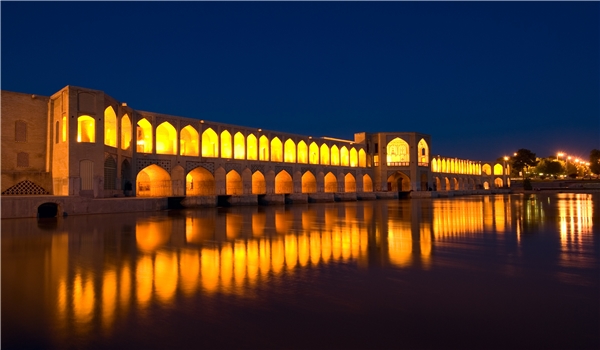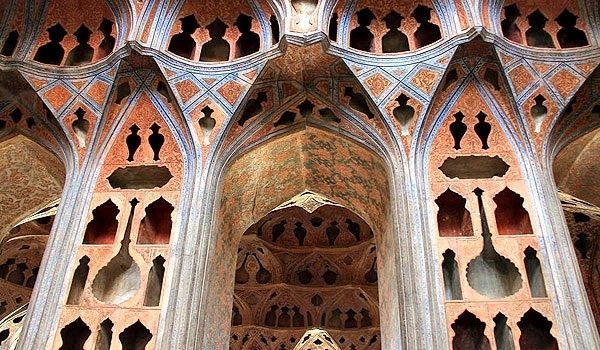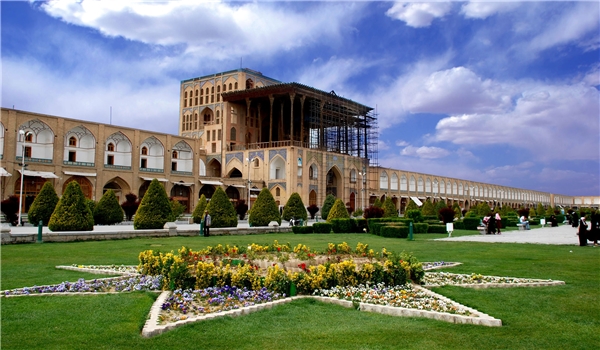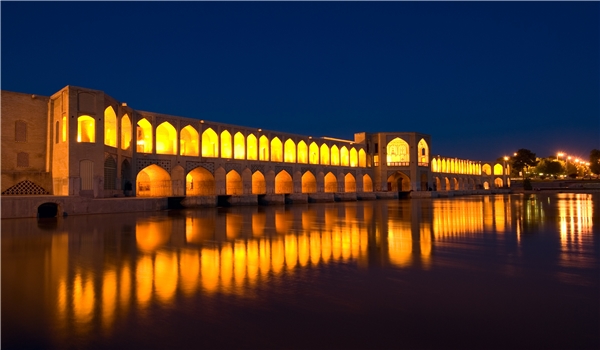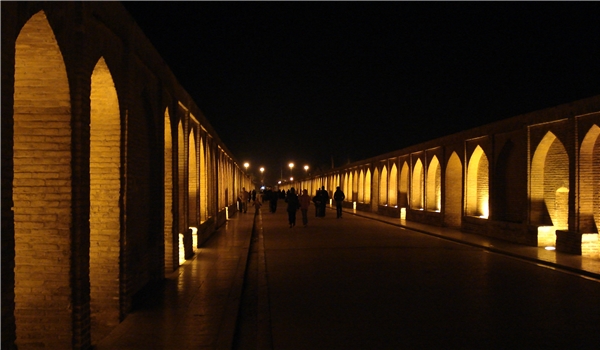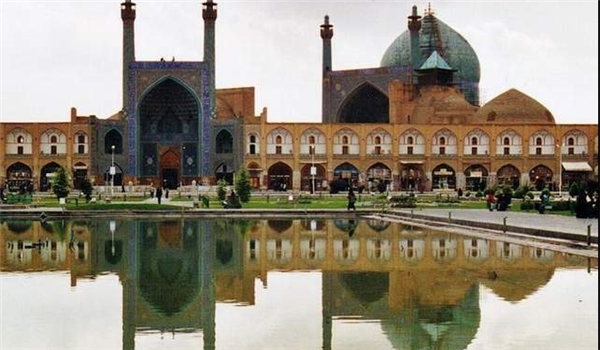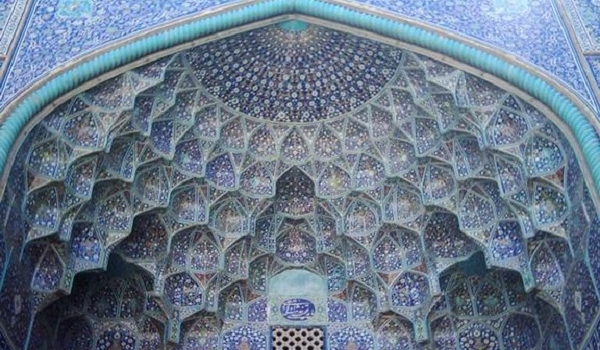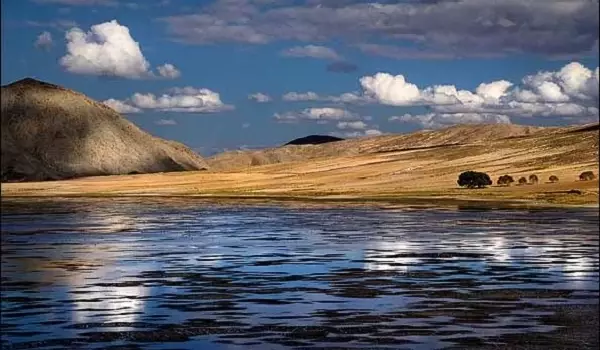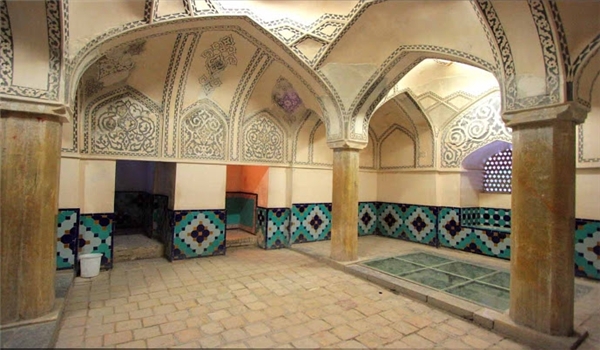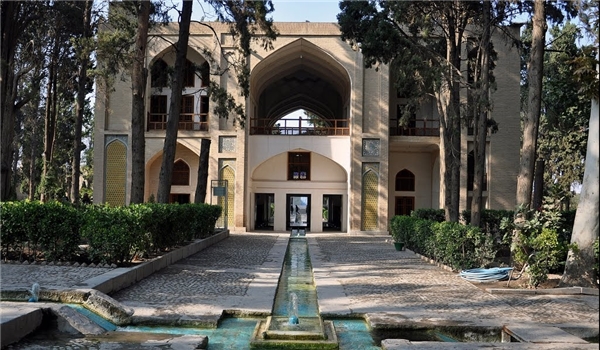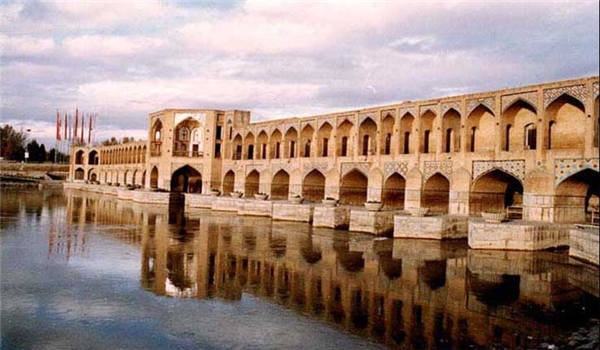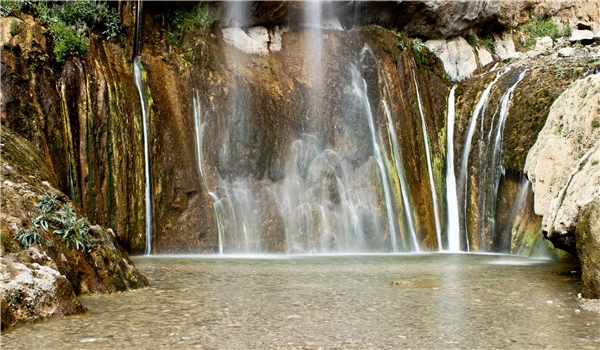Pictures: Isfahan, Half of World
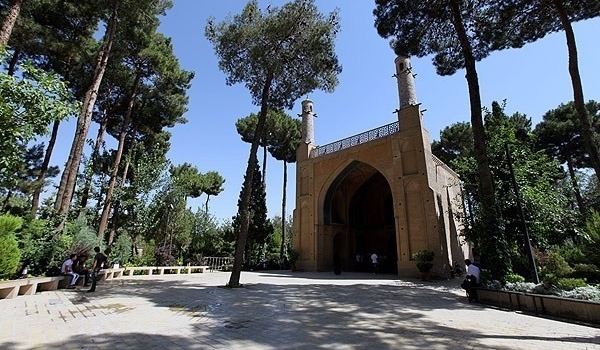
Iran is known to many foreigners because of its Isfahan, a city with numerous tourist charms, including historical sites and monuments, only a few of which have, so far, been registered in the list of the World Cultural Heritage.
March 21 marks the start of Spring and the turn of the new Iranian year, and to celebrate the occassion we invite you to join us in an electronic tour of Iran with one province covered for you each day.
Today: Isfahan province
Isfahan province is one of the Thirty-one provinces of Iran. It is located in the Center of the country. Its capital is the city of Isfahan.
The city of Isfahan is the provincial capital. The province has 18 townships, 38 counties, 67 cities, and 2470 villages in all. The most important cities and countries of Isfahan include Aran and Bidgol, Ardestan, Lanjan, Shahinshahr and Meymeh, Khomeini Shahr, Khansar, (The Upper) Semirom, Fereydan, Fereydunshahr, Falavarjan, Kashan, Golpayegan, Khomeini-shahr, Mobarakeh, Nain, Najaf Abad, Lower Semirom (Dehaghan), Shahreza, Anarak and Natanz.
Isfahan has artifacts dating back to the Paleolithic period, and written history going back to ancient Aspandana. At one time Isfahan was among the largest cities in the world.
It has twice been the capital city of Persia — during the Parthian Empire and again in the sixteenth century Safavid dynasty. It was here that the Safavids declared Shiite Islam to be the empire’s official religion, one of the most important markers in Islamic history.
The art and architecture in Isfahan rival anything else in the world in terms of beauty and intricacy.
People of Isfahan are extremely hospitable. The city is ‘Half the World’, because of its unmatched beauty and historic ambiance. “Isfahan is Half the World” was dubbed for the first time by French poet Renier who visited this city in the 16th century.
Handicrafts and Souvenirs of Isfahan
The Province of Isfahan is reputed for its handicrafts and can be considered as an important sector in this regard. Besides its own local products, specialties from other provinces of Iran are also produced here. Since this province is highly favored by tourists, it is an obvious fact that handicrafts play a vital part in this area. The most important of these are the following: Carpet weaving, brocade weaving, Gelim (or kilim, a coarse carpet), enamel work, khatam (inlaid work), engraving on metal, silver work, jewelry making, ceramic and tiles and types of sweetmeats, such as ‘gaz’ and ‘souhan’.
Local and Regional Foods of Isfahan
Special delicacies are prepared in both the urban and rural areas of the province. These are several kinds of soup or the traditional types of Aash, prepared with broth, leafy vegetables and lentils. Types of abgoosht or meat broth and lentils. A wide array of soups, side dishes, curries accompanied with rice, and pickles to mention a few.
Local Music and Dances of Isfahan
Isfahan music teaching is one of the most famous Iranian schools of music, which has been blossomed in the Safavid era, being the capital of the monarch then. Due to the same fact one of the most famous Iranian musical divisions is known as “Bayat of Isfahan”. In addition to the same, in Christian locality of this province the Christian music is usually played in Jewish-Christian churches. Mention can also be made of other types of the music in Isfahan Province which belong to the vicinities of Isfahan, i.e., Bakhtiyari and Azarbayjani musics.
Tourist attractions
This province has hundreds of tourist attractions and historical monuments. The followings are just a few of these tourist charms which attract tens of thousands of people from Iran and across the world each year.
Zayandeh Rood River
The Zayandeh Rood is one of the most important rivers of the central plateau of Iran. The same has come to be known by this name, due to the various gushing springs on its course, that is from its source to the mouth. The river takes its source in the northeastern front of Zard Kooh -e-Bakhtiari in the vicinity of Cheshmeh Deymeh, and flows to the marshes of Gavkhoony.
The maximum length of the said river is 420 km and its width ranges from 10 to 20 meters in the valleys and varies up to 800 meters in the city of Isfahan. The Kooh Rang tunnel aids in adjoining a part of the waters of the Karoon river to the Zayandeh Rood. Throughout its course, the presence of lush green thickets adds to the beauty and the pleasant environment, which attributes to the recreational atmosphere.
Furthermore, alongside the banks of this river, in the city of Isfahan and near the Zaman Khan Bridge (between Isfahan and Chahar Mahal and Bakhtiyari), can be considered as an excellent spot for recreational purposes.
Ali Qapoo Edifice
This palace was also called ‘Daulat Khaneh-e-Mobarakeh Nagsh-e-Jahan’ and the ‘Daulat Khaneh Palace’. Its unique archaic architecture is related to the Safavid era. This edifice was constructed under the orders of Shah Abbas I. The monarch would receive special envoys in this palace and hold his audience here. Valuable miniature paintings, the works of the reputed artist of the times Reza Abbassi, and other traditional works of art can be noted here.
Plasterwork of the ‘sound room’ was modeled such that the acoustic affect produced natural and pleasant sounds. The sovereign and his guests would be spectators to polo, illuminations, fire-works and the dramatics that took place in the Nagsh-e-Jahan Square from the halls of this elegant palace
Chehel Dokhtar Minaret
Another interesting relic of the Saljuqi period is the Chehel Dokhtar Minaret in Isfahan. The same is adorned with brick work and ‘kufi’ inscriptions. This Minaret was constructed in the year 501 AH. by ‘Abol Fath Nahuji’ during the reign of Soltan Mohammad Ebne Malek Shah Saljuqi.
Chehel Sotune Palace
The Chehel Sotune Palace and its garden cover an area of approximately 67,000 sq. m. This palace was constructed during the reign of Shah Abbas I. Shah Abbas II was also responsible for additions to this palace, such as the hall of mirrors, the hall of 18 pillars and two large chambers facing the north and south. The spectacular hall of mirrors with its decorative mirror work, tile work and paintings, along with its majestic porches and pool which faces this hall, all add to its splendor.
Interesting aspects of the Chehel Sotune Palace are:
The stone lions at the four corners of the central pool, the hall and marble and vaulted cornices around it. Paintings of Chehel Sotune Palace
The gilded adornments, paintings and the portrait of the sovereign in the royal hall. Along with that of the chambers surrounding the hall of mirrors.
The portrait of Shah Abbas I with the special crown and the miniatures of the treasury room.
Several facades such as the ‘Qotbiyeh Mosque’, ‘Zaviyeh in Kushk’, and the imprints of the ‘Dar-e-Joubareh’ and ‘Aqasi Mosque’ are affixed in the western and southern walls of the garden. The hall and porches of this palace were constructed during the fifth year of the reign of Shah Abbas II. The reflection of the twenty pillars of the hall in the pool opposite the palace brings about a conception of forty pillars. Hence the name Chehel Sotune.
Isfahan Bazaar
This bazaar is a relic of the Safavid era, stretched from the Qasariyeh facade to the Jame’ Mosque. This bazaar is also known as the ‘Bazaar-e-Nezamiyeh’ or ‘Nezam-ol-Molk’.
Hasht Behesht Palace
This historical edifice was constructed during the reign of Shah Soleiman Safavid. Today, only a minor portion of the grounds remains. However, tile work with interesting designs, which are the remnants of this palace can be noted.
Khajoo Bridge
The above mentioned took its foundation in the late Teimooride period, and was constructed according to what is currently seen in the form restorations done in 1060 AH, at the order of Shah Abbas II. Its cubicles, adornments and tile work are interesting aspects of this constructions. There is a structure in the center of the bridge, known as the Beglarbegi construction. The same was used as a temporary residence for the royal family. The name of this bridge is a distorted version of the word ‘Khajeh’ which was a title for great personalities in the Safavid era. It was constructed on the Zayandeh Rood River.
Kooh Sangy Fire Temple
The said fire-temple can be considered as one of the most ancient historical heritages of Isfahan. It is located at a short distance from the Zayandeh Rood, and distinctly draws ones attention in being outstanding in the western plains of Isfahan. Above the Kooh Sangy is a round and large clay brazier with a number of crevices. From where the fire was lighted even at the highest point of this vicinity and was capable of being seen even at a great distance. The walls of the fire-temple is a kind of platform, gradually beginning at the base and regaining a vast area in the upper portion, thus providing space for various rituals.
Menar Jonban Minaret
This structure comprises a mausoleum and two minarets, constructed on the tomb of ‘Amoo Abdollah’ a reputed personality of the 8th century AH. The tombstone reveals the date 716 AH, coinciding with that of the reign of ‘Oljaito’ Ilkhan the Mongol. It is extremely interesting to note that on shaking one minaret, not only does the other move, but that the structure itself sways.
Naqsh-e-Jahan Square
This square is from the period of Shah Abbas I, and has a length of 500 m. from north to south, and its width being approximately 165 m. Surrounding this vicinity are the Abbasi Mosque and Sheikh Lotf Ol-lah Mosque, the Qaisarieh portal and the Ali Qapoo Edifice. During the reign of Shah Abbas I and his successors, this square was an area where festivities, polo, dramatics and military parades took place.
Sio Seh Pol Bridge
This bridge is approximately 300 m in length and 14 m in width, and is one of the masterpieces in bridge construction in Iran and the world. The same was constructed in 1005 AH. under the supervision and expense of Allah Verdy Khan, one of the famous commanders of Shah Abbas Safavid I. The Armenians used to hold special festivities near this bridge in the Safavid period. It was constructed on the Zayandeh Rood river.
Mirza Kuchak and other caravansary
These are named as, Sheikh Ali Khan, Jarchi Bashi, Teemcheh-e-Jahangir, Saray-e-Sefid, Mirza Kuchak, Mir Ismail and Khansariha in the bazaar of Isfahan. Maranjab, Amin-ud-Douleh, Gomrok, Mooteh and Gabr Abad in Kashan. Bazaar-e-Zavareh in Zavareh, Behjat Abad on the Isfahan – Natanz Road, Chahar Borj on the Isfahan – Kashan Road, the Gez caravansary north of Isfahan, Bahram on the Isfahan – Tehran Road, Madar-e-Shah in the north of Isfahan, Taqi Abad, Golgoon Abad, Yagmeesh and Khargoosh on the Isfahan Road, and Dambi caravansary amongst others in Isfahan province.
Abbasi Jame’ Mosque (Imam Mosque)
The same is located to the south of the historical square of Isfahan, and was constructed at the orders of Shah Abbas I. Though its artistic works took place during the rule of his successor, and its epigraphs are the affects of a reputed calligrapher of the Safavid era. One of the interesting features of this mosque is the echo of sound in the center of the gigantic dome in the southern section. The height of which is 52 m. and the minarets therein 48 m. Whereas, the minarets at its portal in the Naqsh-e-Jahan Square reach an elevation of 42 m. The huge one-piece marble and other slabs of stone, besides the intricate tile work and adornments prove extremely spectacular.
Vank Church
The Vank Church is one of the most beautiful and largest churches in the Jolfa vicinity of Isfahan. Its gilded ceiling, interior section of the dome and fine historical paintings are matchless. Internally, the walls are adorned with oil paintings that are also gilded similar to that of Iranian art. Religious paintings revealing an Italian touch can be observed here. The founder of this structure was Shah Soltan Hossain Safavid.
Gavkhoony Wetlands
The above mentioned can be considered as one of the reputed wet lands in the central plateau of Iran. This vicinity covers an area of 476 sq. km and is located 167 km southeast of Isfahan. The same is 1,470 m from sea level and the maximum depth of this wetland is 150 cm This wetland has high biological resources, including other activities in regards to environment. The area also accounts as a refuge for immigrant birds, thereby adding to the tourist attractions.
Safeh, Shakooh, Dez Qala and other Mountains
These are named as, the Safeh peak with an elevation of 2,232 m, the Shakooh peak rising to a height of 2,418 m, Kolah Qazi with an altitude of 2,534 m, Dez Qala at 3,251 m, Yakh Ab with an elevation of 2,288 m, Deez Ab at 2,678 m and Garm Abad rising to an elevation of 3,359 m amongst others.
Mohtasham Kashany Tomb
This famous personality, a poet of the Safavid era has been laid to rest in Kashan. The small dome of the mausoleum is decorated in tiles, and the ceiling of the mausoleum is adorned with beautiful paintings. On the walls, verses from his poems have been inscribed in white on a navy blue back ground, in the ‘nastaliq’ script.
Fin Historical Edifice and Garden
This garden is located to the south of the city of Kashan and near the village of Fin. The same was constructed on the former structures of the Al-e-Booyeh era. Its general layout and aqua system has been rendered special attention. This vicinity gained fame due to the murder of Amir Kabir, the reputed nationalist and Prime Minister (Grand Chancellor) of Nasereddin Shah Qajar. Amir Kabir was assassinated in a small bath here in the year 1268 AH at the order of the Shah. This garden is a relic from the Safavid period, and has remained such for centuries due to the capacity of water it gains from the Soleimaniyeh spring. Today, this water flows into the ‘Lasegah’ pool after meandering through this beautiful garden, and providing water for the surrounding areas.
The structures of this garden are the entrance and its facade, tower and ramparts, the Safavid and Fathali Shah sections, chambers for the elite, the museum on the western side of the premises, the large and small bath and the library in the eastern sector of this garden.
The covered construction housing the Shah Abbasi section is in two floors, this being in the center of the garden and opposite the grand facade. The construction of the same was completed in the year 1226 AH. Here, there are beautiful paintings and an inscription worked with plaster in the ‘nastaliq’ script. In the vicinity of this garden, several monarchs such as Shah Safi, Shah Soleiman, Shah Tahmasb, Shah Abbas, Karim Khan Zand and Fath Ali Shah have all contributed to the repair or making addition to the structures on the premises. However, these structures witnessed plunder in the early period of the constitutional revolution around two centuries ago.
Niyasar Cave
The said cave dates to approximately 2000 years ago and nestles in the limestone hills overlooking the Niyasar Village of Kashan. This cave has been dug out with the help of primitive implements and resembles a meandering stony tunnel in the breast of the Karkas Mountains. The same comprises of long and narrow passages, several chambers and wells. It is well worth mentioning that appropriate gear is required to gain access to this vicinity.
The Niyasar Cave is in three floors, and has a number of wells. Its passages and chambers cover approximately 500 square meters. The underground tunnels or passages are less than one square meter in area, and in some locations measure 100 x 70 sq. cm. Vertically 45 wells are connected to each other at an average depth of 118 m. This cave has four entrances and is of two separate sections. The central sector comprises of seven chambers in variable heights and very skillfully carved out.
The same is connected to the floor beneath by the wells and halls. The other portion is a lengthy passage with a gradual incline and is connected to other wells, this ends in a beautiful hall. At the extreme end of this sector is a large area with several dug out chambers. The Niyasar Cave has 20 chambers, the largest of all being 28.6 sq. m. and the smallest 1.8 sq. m.
Semirom Waterfall
The Semirom waterfall is one of the reputed of the province and is located 4 km east of Semirom. The same is at an elevation of 35 m. This vicinity offers different facilities for visitors.
Sassanid Fire Temple
This fire-temple is located near the Natanz mosque and is amidst a platform which is at an elevation of 2 m from ground level. Only two of its four ceilings that connected the structure to the dome made of stone remain. The main structure was constructed of stone slabs coated with gypsum.

